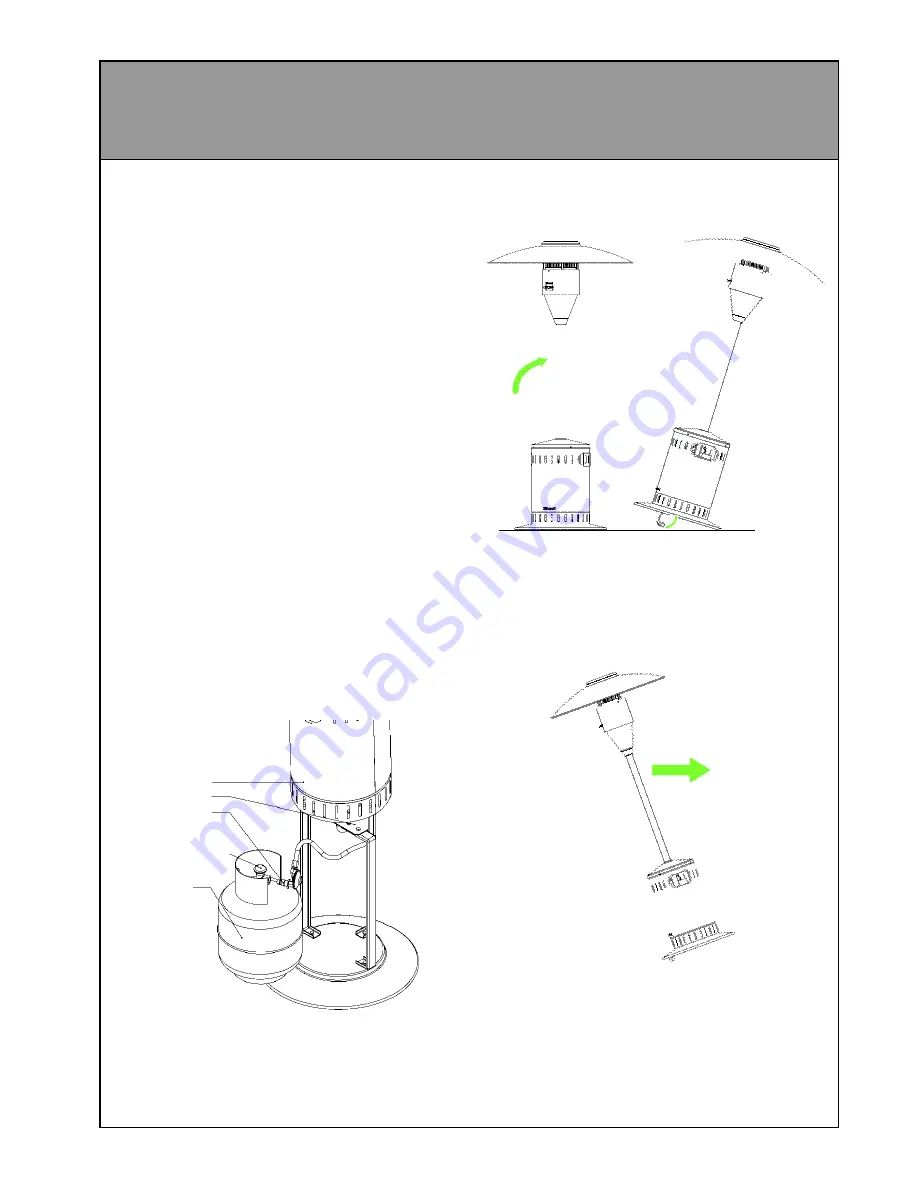
3
OPERATION
After the heater is properly assembled and all
gas connections to the regulator have been
tested for gas tightness (
Refer page 9, To test
for gas tightness.
), the heater is ready for
operation.
Connecting gas bottle:
1 Slide the bottle cover up until it is clear of
the leg assembly and rests on top of legs
so that it will not fall down while you are
installing the bottle.
2 ALWAYS CHECK THE GAS SUPPLY
HOSE FOR DAMAGE BEFORE
PROCEEDING AND HAVE THE HOSE
REPLACED IF THERE ARE ANY
CRACKS, HOLES, ABRASION MARKS
OR SIGNS OF PERISHING.
3 Attach the regulator to the bottle NOTE: the
thread on the regulator tightens by turning
counter-clockwise.
4 Fully open the valve on the gas bottle and
check the connection for leaks as described
in the assembly instructions.
5 Replace the bottle cover so that it is resting
completely on the base, taking care not to
trap the gas supply hose against the legs.
Bottle cover
Leg flange
Gas bottle
Valve
Regulator
Moving the heater
1 With the controls facing towards you, tip the
heater backwards.
2 Fold the wheels outwards as shown and
lower the lifted edge onto the wheels.
3 Tip the heater back in the opposite direction
until the heater is balanced and move to
desired location.
4 To retract the wheels simply push the heater
backwards again until the wheels are
hanging straight down and stand the heater
back up (the wheels should fold away without
any further assistance).
5 NOTE: The heater will not light unless the
wheels are retracted
IMPORTANT: YOU MUST TEST THIS
CONNECTION FOR GAS TIGHTNESS
BEFORE OPERATING THE HEATER.
Refer page 9, To test for gas tightness.
Summary of Contents for PATIOSSL
Page 6: ...6 OUTDOOR AREA CONTINUED...




























